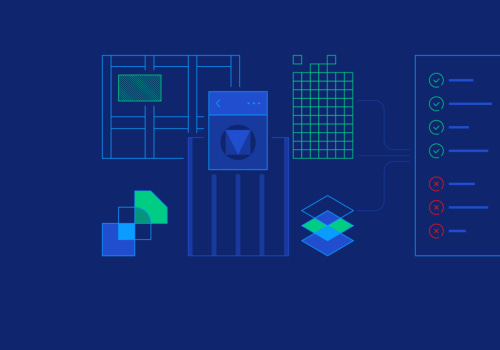You can always start blogging for free with the free WordPress plan, com, which includes our best-in-class hosting. Our diverse payment plans offer additional features perfect for personal use, freelancers, small businesses, and online stores. Find the right plan for your blogging needs. Once you're done with step 1, you'll be able to see a screen like the one below, where you'll be asked to confirm your email address.
I'm pretty sure that you must have created a great website for free by following the steps mentioned above. If you have any questions or concerns about it, feel free to leave a note in the comments section below, we will be happy to help you. Share your views and ideas on this to make it more informative, so that even a beginner can do it for themselves. If you like the tutorial, share it with your friends on Facebook, Gplus and Twitter.
While this design may be perfect for your blog, it may not work for others. For example, you might want a theme that's more unique. You can choose from hundreds of free and premium WordPress themes available in the WordPress theme directory or third-party marketplaces for more color options, sidebars, background options, Google fonts, and designs. Nowadays, blogs have become more than just a way of expressing oneself.
They have become a way of life. Some people occasionally write personal stories, while large companies invest thousands of dollars in their blogs. Blogging has become a career and a dream job for many people who can now work from anywhere in the world. Now, whether you imagined your blog as a hobby or as a potential money-making machine, you first have to create it.
We'll skip the motivational speeches and assume that you've already set out to create a WordPress blog. Oh well, you can even create a blog from the comfort of your couch if you have a laptop. Even if you're just starting out, we highly recommend that you opt for the self-hosted version. Yes, there will be a higher learning curve and probably more work on your part, but having your own website that you can control is priceless, and it's definitely worth investing more time in administration.
You can install the themes, plugins and services you want, publish ads and monetize the blog the way you want. There are virtually no limitations for a self-hosted WordPress blog. On rare occasions, having a self-hosted blog can be unnecessary. No matter how many benefits it entails, some users will never need full control over their site.
They won't have to change and customize themes or use multiple add-ons. It also allows you and your incoming visitors to perform actions such as commenting and sharing on other social networks from the interface. This is commonly known as the WordPress control panel; this is where you can monitor and manage every aspect of your website's content, functionality, and web design. The answer to this question would be completely different a few years ago.
But nowadays, it's possible to design a blog without technical knowledge. Many platforms, such as Wix and Squarespace, have introduced visual generators that allow you to simply drag and drop website elements wherever you want them to be until you get a site you like. WordPress, on the other hand, has more than a few page builders. When you combine them with premium themes, you can design a professional-looking site without having to write a single line of code.
At first, coming up with ideas for blog posts can be relatively easy. You've probably created a blog with a few concepts in mind, and covering those first few points might not be a challenge. As you progress, creating a unique and exciting blog post will become increasingly difficult. This is especially true if you care about your blog and want to get the most out of it.
When you get stuck, you should check if there are any open or unaddressed problems in your field of expertise that you can solve. It would be helpful if you also thought about changing your perspective; instead of writing about a general problem, try writing from personal experience, which will appeal to the audience. In addition, explore keywords and find out what people are interested in. If you can combine those keywords into something unique to you, having a popular blog post is just a corner away.
You also have to always know your audience and write about the things they want. If you don't know your audience yet, you can start asking them questions through blog posts, surveys, or social networks. Those are just some of the ideas; for more information, see How to Choose What to Blog About (with examples of viral headlines). WordPress is the best to use, as it's easier to understand compared to other CMS like Drupal and the rest.
I currently have two websites created with WordPress. WordPress is a great place to host your blog because you'll have a robust CMS that will help you publish and manage content. Instead, we'll show you how to start your own blog using self-hosted WordPress so you have full control. The default theme is active on your blog when you install WordPress.
If you've installed the latest version of WordPress, the default theme will be Twenty Twenty-Two, a minimalist, lightweight theme that you can customize with the Gutenberg editor or another WordPress page builder. When you create a WordPress blog, one of the main benefits you get is access to the huge collection of WordPress themes and plugins. This will launch the WordPress editor, which will allow you to write your blog posts using a truly intuitive block system. When you first create a WordPress blog, you practically only have the ability to write blog posts and create pages.
Of course, you should also know that there are other options for creating a blog on the market, such as Wix or Squarespace, but these are less flexible than WordPress or have a certain price, making WordPress a perfect start for newbies. While there are a lot of specialized plugins that are only good for specific uses, there are some must-have WordPress plugins that all sites, including blogs, can benefit from. With a little practice, you can create a quality blog on WordPress that ranks and gains traffic from search engines, gives you more leads and earns you more money. But there are actually thousands of blog themes available for WordPress sites (many of them are open source like WordPress itself), so you're not at all limited to that small selection that Bluehost shows you initially.
In this post, we'll show you the steps needed to create a quality blog in the WordPress content management system (CMS). Once there, Bluehost will provide you with a simple assistant that will guide you through the process of installing WordPress for your blog. To change the heading of a WordPress blog post, find the menu box and select the paragraph button highlighted in blue. .




